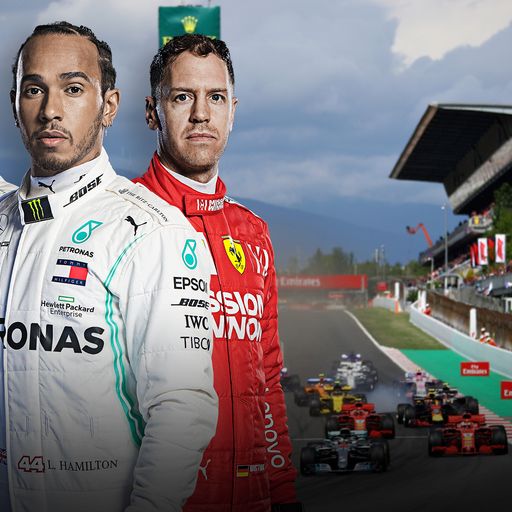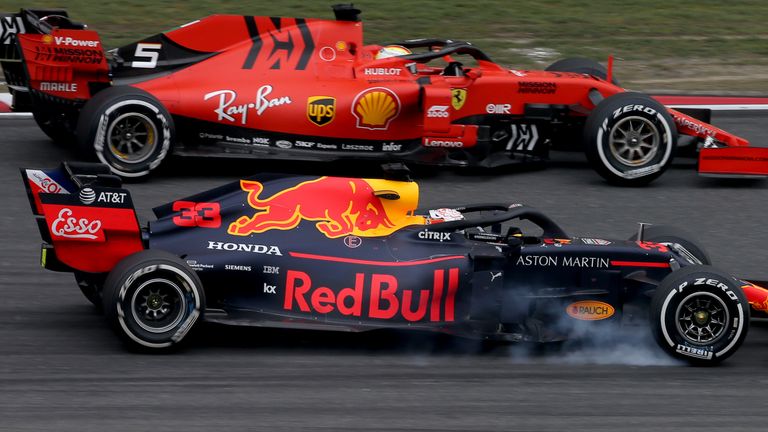Spanish GP: Can Red Bull become F1 2019 contenders with upgrades?
Sky F1 expert Mark Hughes looks at Red Bull's season so far, unexpected chassis struggles and a much-anticipated Spanish GP upgrade which could make or break their campaign...
Friday 31 May 2019 10:50, UK
Expectation lies heavy upon Red Bull as we head to Barcelona, the traditional venue for the raft of updates and the possible re-aligning of the competitive orders seen in the first four flyaway races.
It was here two years ago, after a difficult start, that Red Bull began to pull itself into competitive shape after lagging badly behind Mercedes and Ferrari in the opening races.
There are certain other parallels to 2017 for Red Bull. The early-season balance difficulties came in the wake of new aero regulations and in both instances the Red Bull drivers were complaining, in the early races, of a car that feels disconnected between the front and rear ends.
Trackside observation backed up by GPS readings show that the current car is often the absolute fastest into slow corners from turn-in to apex. But it then becomes quite unstable at the rear on corner exits - and its speed in fast long-duration corners is well below that of Mercedes.
In the first two races the car qualified over one per cent adrift of pole position. There was a step change improvement after Bahrain but it was still around 0.6 per cent down in China and Baku. As an average over the four races, the RB15 has qualified 0.64s slower than Mercedes and 0.384s off Ferrari.
One of the less publicised but very significant changes to the 2019 regulations was the limiting of the under-wing nose strakes to two each side where previously there was no limitation. These strakes are used to divide up the airflow between that travelling to the barge boards and down the sides of the car and that channelled to the underfloor. They are crucial in joining up the upper and underbody airflow that is such an essential part of how the current cars maximise their aerodynamic performance.
Because of the extreme way its high-rake car works, it seems that Red Bull has suffered more than other teams in this regulation limitation. The car is aerodynamically powerful as it dives under braking into slow corners and its drivers can carry a lot of speed up to the apex, but as its platform then levels out or pitches under acceleration - and stays relatively level in fast corners - that aero performance is somehow being lost to the detriment of rear end downforce, and the area of suspicion within the team has fallen to how those under-nose strakes are directing the flow.
Modifications to how the flow worked this area were what was behind the improvement between Bahrain and China. A more fundamental change, incorporating this new knowledge, is planned for Barcelona.
These upgrades will be, according to Horner, "fairly subtle".
"It will be the usual front and rear wing upgrades," he explained. "It's evolution rather than revolution."
Honda's performance is ever-improving but GPS analysis suggests it's still around 0.5s down on Ferrari in qualifying mode and so it's therefore unlikely to be a pole-contending car at Barcelona regardless of aero improvements.
But if the car's great low speed corner entry speed can be combined with more consistency on corner exit, then we might once more be looking at the sort of performance that saw last year's car as the class of the field at Monaco. As ever, a good clue for this will be its performance through sector three at Barcelona.





